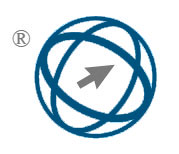Spatial–Spectral Cross Fusion Attention based Hyperspectral Image Super-Resolution for Land Resource Auditing
Abstract
Hyperspectral imaging, celebrated for its detailed spectral information, finds broad application in various fields. However, the limitations inherent to optical systems often impede the direct acquisition of highresolution hyperspectral images. Hence, achieving these images has become a key focus in the research community. The process of single hyperspectral image super-resolution (HSI-SR) aims to upscale lowresolution images to a higher resolution. With the evolution of deep learning, the incorporation of Convolutional Neural Networks (CNNs) into super-resolution methods has shown considerable promise. Yet, the challenge lies in the thorough extraction of both spatial and spectral data, especially in the context of remote sensing, which can limit the model's ability to learn effectively. Additionally, Transformer-based techniques often struggle to capture the intricate relationships between spatial and spectral features, which can hinder the effectiveness of image reconstruction. To overcome these challenges, this paper presents a novel HSI-SR approach: Spatial–Spectral Cross Fusion Attention based Hyperspectral Image Super-Resolution for Land Resource Auditing, which synergizes the strengths of CNNs and the Transformer architecture. During the learning of spatial features, the method alternates between window self-attention and zero-padding window self-attention, allowing for a more comprehensive focus on feature information and the integration of different windows to achieve long-range insights. Furthermore, the cross-attention feature fusion module designed for this approach is adept at merging spatial and spectral features, thus enhancing the model's ability to learn from both types of information. The approach effectively enhances spatial-spectral integration, improving reconstruction quality. Extensive experimental assessments have demonstrated the proposed method's superiority over current industry benchmarks. PSNR improvements 0.08 over baseline in Cave.
Full Text:
PDFDOI: https://doi.org/10.31449/inf.v49i22.7634

This work is licensed under a Creative Commons Attribution 3.0 License.









